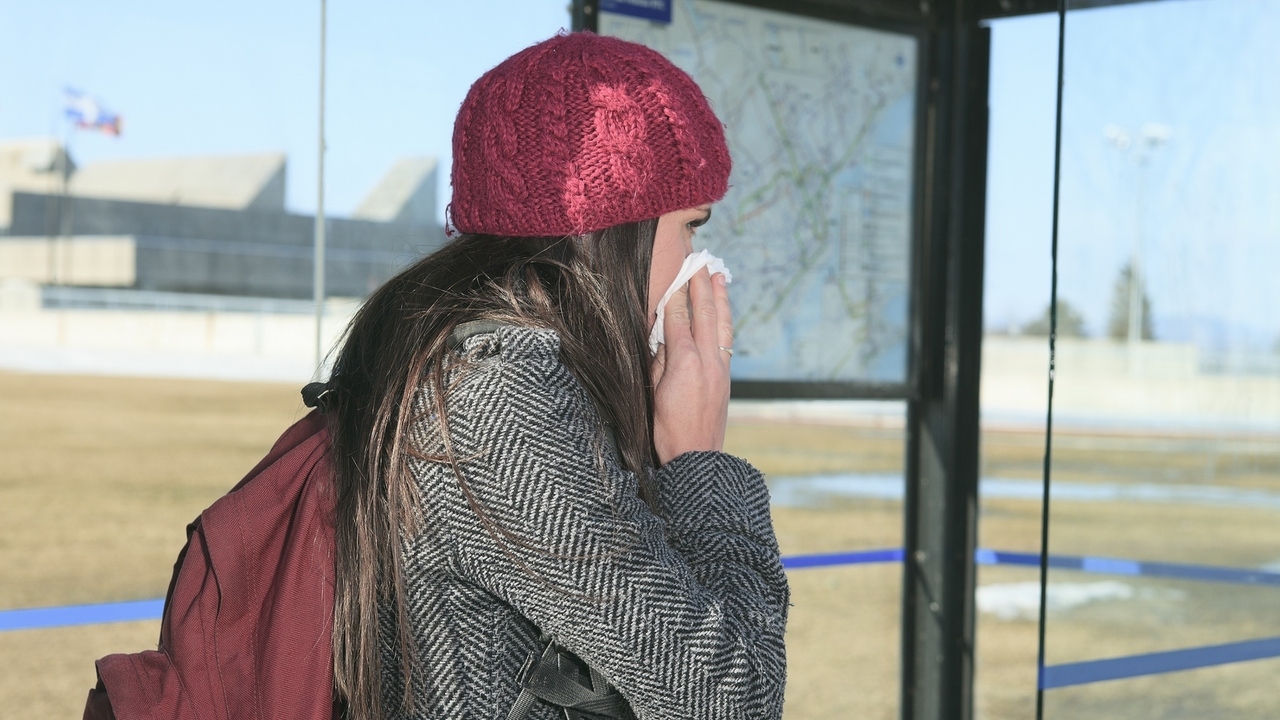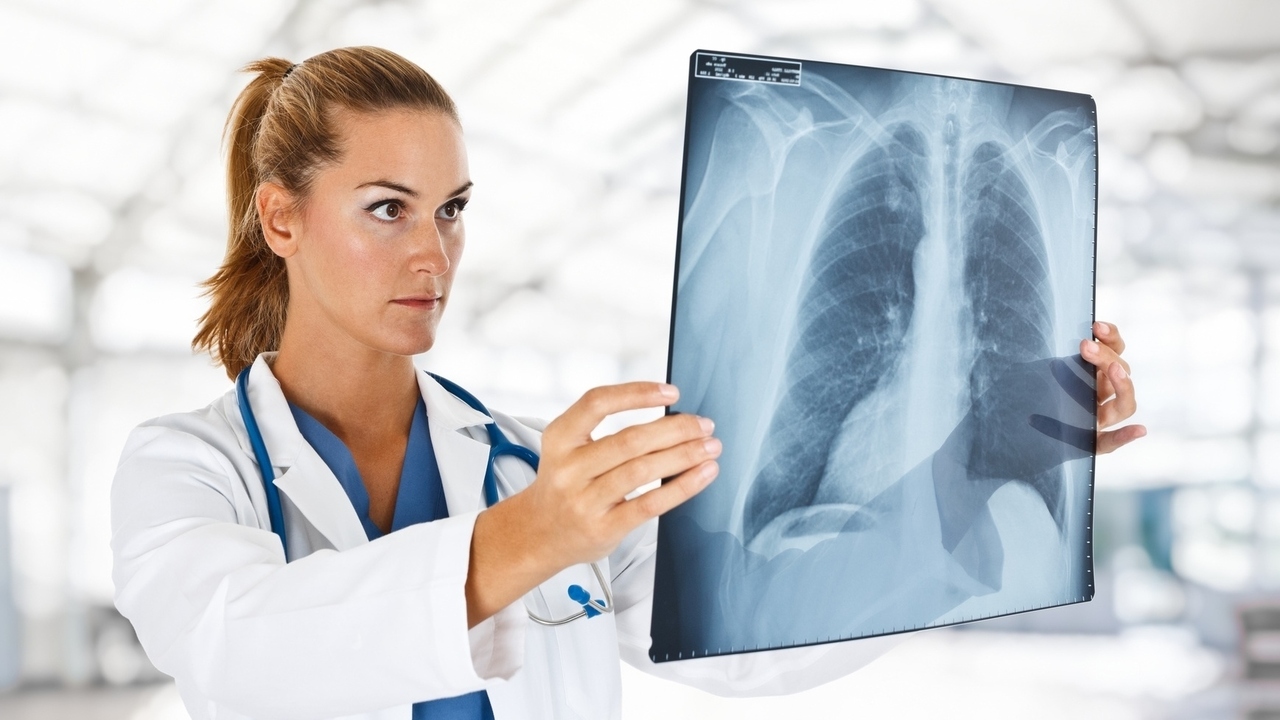 Olesya Shelomova/fotolia
Olesya Shelomova/fotolia
What is Hamman-Rich Syndrome
Hamman-Rich Syndrome is also known as acute interstitial pneumonia. It is an uncommon type of pneumonia for which researchers have not yet found a cause (idiopathic). It affects otherwise healthy individuals. The underlying condition may worsen without symptoms appearing for a long period of time, but when the symptoms do manifest they come on very suddenly and "acutely".
The condition received its name from the doctors who discovered the disease in 1939, Drs. Hamman and Rich.
Acute interstitial pneumonia has similar symptoms to acute respiratory distress syndrome, and may be misdiagnosed as such.
Pneumonia results when tissues of the lungs become inflamed in reaction to infection. Interstitial pneumonia, by comparison, is a long-term condition that affects the connective tissue of the lungs. The inflammation is caused by the build up of white blood cells and plasma in the alveoli (the tiny sac that facilitate the carbon dioxide/oxygen exchange in the bloodstream). With interstitial pneumonia, the inflammation also extends into the bronchioles - small airways that branch off into the lungs.
If the inflammation lasts long enough, the fluid hardens into scar tissue (fibrosis). If there is enough scar tissue, over time alveoli will be destroyed and the space filled with cysts. Over time, the bronchi and the walls of the bronchi widen, or are destroyed resulting in the lungs shrinking.
Sixty percent of those with acute interstitial pneumonia die within six months of the appearance of symptoms.
Symptoms of Hamman-Rich Syndrome
As stated earlier, symptoms of Hamman-Rich Syndrome or acute interstitial pneumonia are similar to those observed in acute respiratory distress syndrome, which are:
- shortness of breath
- rapid, shallow breathing
- crackling or wheezing sounds in the lungs
- cyanosis (blue tinge) to the skin
- heart and brain function issues (rapid heart rate, difficulty concentrating, forgetfulness) because of long-term reduced oxygen supply
Diagnosis and Treatment of Acute Interstitial Pneumonia
Diagnosis of acute interstitial pneumonia is usually confirmed through CT scans, lung biopsy, and tests that measure pulmonary function.
The goal of treatment is to prevent complete respiratory failure and keep the patient alive and comfortable until the condition resolves. Treatment often involves use of a ventilator in the event of respiratory failure, and administration of corticosteroids (although it is not known how effective these medications are).
For those who survive, lung function will improve over time, but the condition may return.
Sources: www.uptodate.com; www.wrongdiagnosis.com; www.medfriendly.com; www.merck.com






Add a Comment72 Comments
Thank you for sharing that, Beth!
December 29, 2014 - 6:11pmThis Comment
Thank you for sharing your story.
I am by no means a medical expert on this condition. Wisconsonite has also posted about her experiences and may be of more help than I can be.So i would follow-up with MayoClinic and the other institutions as she has suggested.
From what I can remember of my research, doctors generally don't know how patients get it or why, and has baffled them as to how it impacts otherwise healthy people. It sounds like even though the condition hasn't completely cleared, yet, you are stable and hopefully your recent test results will show that you're making progress.
I'm sorry I can't be of much more direct help, but please keep as posted as you're able.
May 23, 2013 - 1:01pmThis Comment
Anonymous,
May 23, 2013 - 9:08amContact Mayo Clinic in MN if you havent already! Get there ASAP they have speialist in this lung condition.
UW Wisconsin Madison and John Hopkins also are best options.
Wisconsinite
This Comment
My father in law passed away April 19
He asked to be removed from the respirator at 1pm
He didn't want the decision to be take off left to us hismloved ones.
Brave man.
We will miss him.
Wisconsinite
May 7, 2013 - 4:56amThis Comment
Thank you for letting us know.
Our hugs and prayers are with you and your family.
May 8, 2013 - 8:13amThis Comment
Yesterday the dr told us he has exhausted all treatment options. Sad day.
We are now waiting for family to all come to say goodbye.
He will be deciding when to remove the ventilator and pass.
Nightmare
Wisconsinite
April 17, 2013 - 5:34amThis Comment
April 15
April 16, 2013 - 6:30amMy father in law was given a third higher dose of Cytoxin ( cyclophosphamide)
His O2 sats dropped through out the day a bit averaging 78-84 with 100% delivered. Peep set to 11. Hypoxia beginning. His eyes seem to be bothering him. I read that the eyes are first to be affected by low O2.
His CT scan yesterday showed profusion of the disease throughout both lungs and only tiny region left of usable lung in upper left lobe. Dr said he has seen a case with disease this bad still recover. So we still have hope.
I massaged his back which he truly seemed to enjoy and it helps to move lymp system fluid. Doing so is important to help him with this battle. He has been moved from bed to recliner several times a day and PT and OT are working with him daily. We continue to struggle with communication since he cannot write and remains on treach vent. Inability to write due to loss of hand eye and thought coordination is also symptom of O2 sat reduction and hypoxia.
Wisconsinite.
This Comment
The Dr said this condition is extremely rare. Is that true?
April 14, 2013 - 7:13pmIs seams this is quite common.
Wisconsinite
This Comment
From what I read, it is rare, but that may be because doctors may not know of the difference between pneumonia and Hamman-Rich. Considering the number of comments I've received on this article, it may be more common than they think, or it may be that more and more doctors know what it is.
April 15, 2013 - 2:19pmThis Comment
Today they gave a higher dose of cyclophosphamide, he did look better today but his O2 sats didn't improve yet.
He is fighting and glad family and friends are visiting with him. He cannot speak and gets frustrated when communicating but can right on a white marker board.
Wisconsinite.
April 14, 2013 - 1:41pmThis Comment